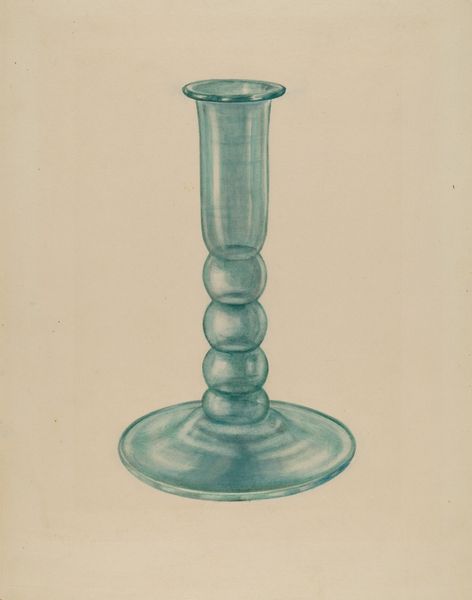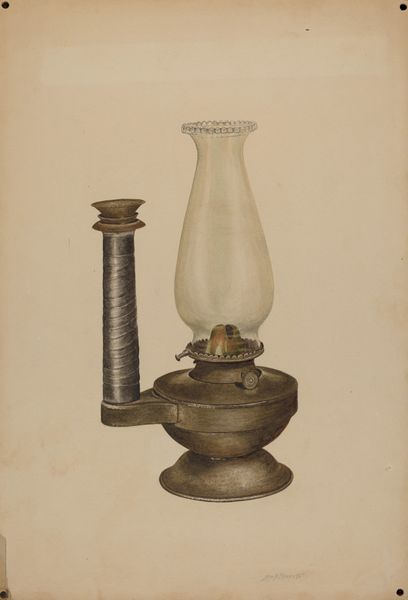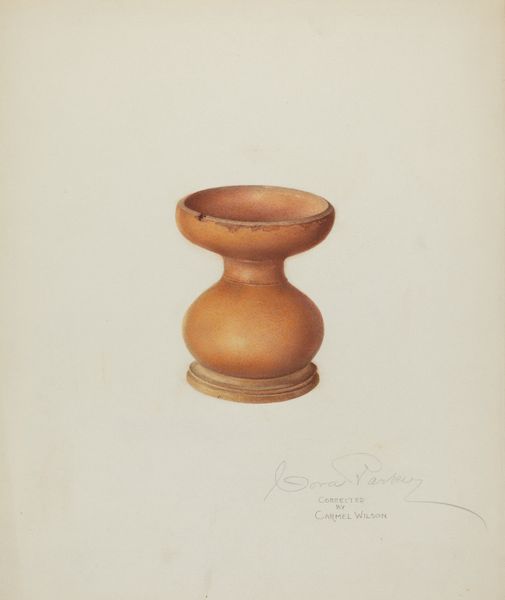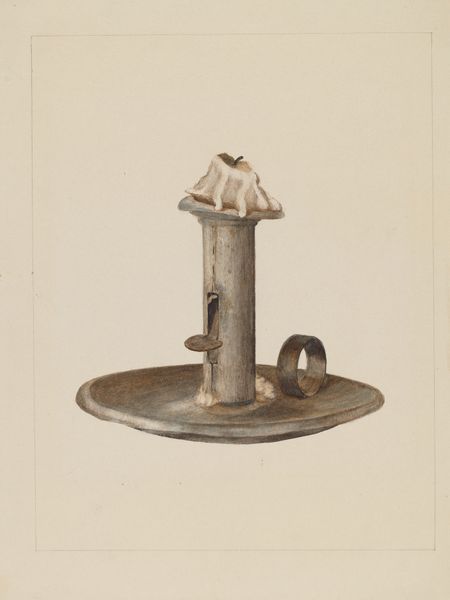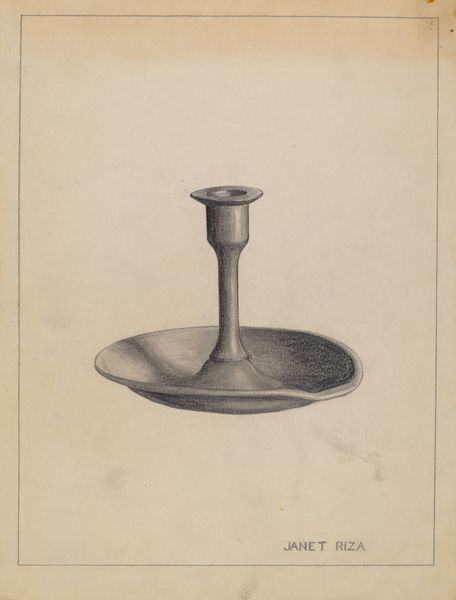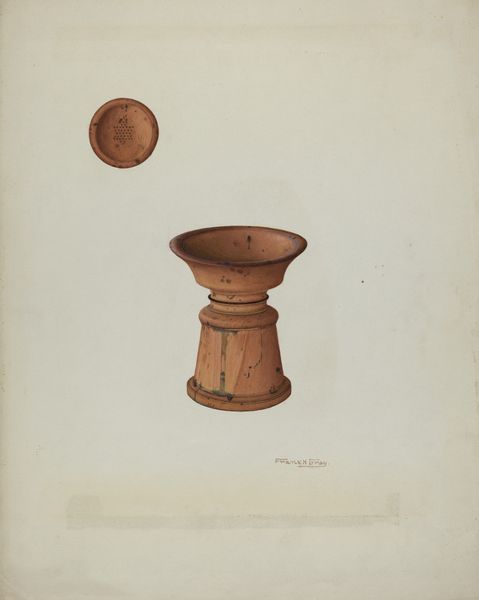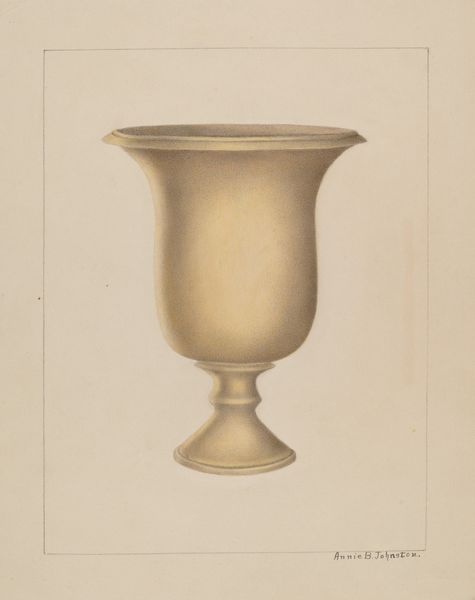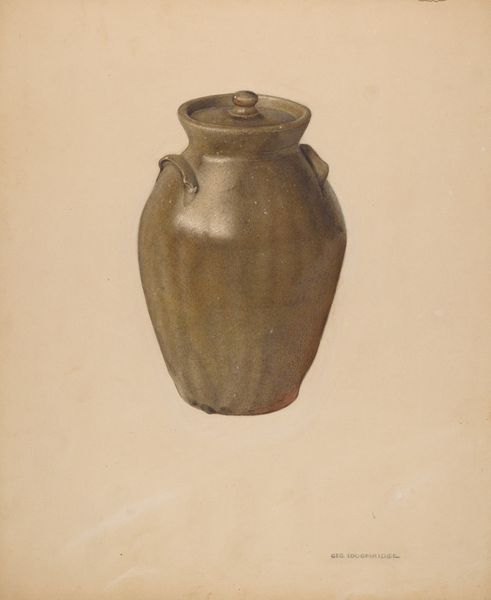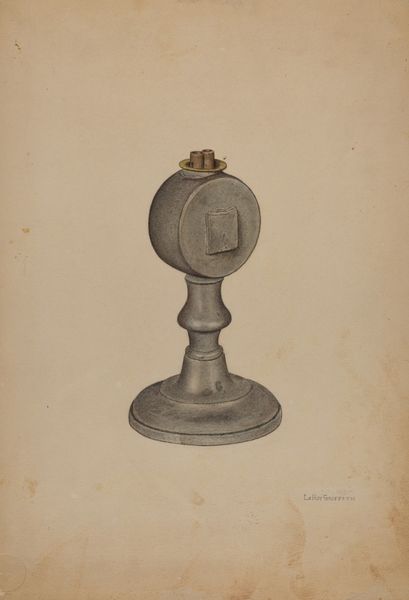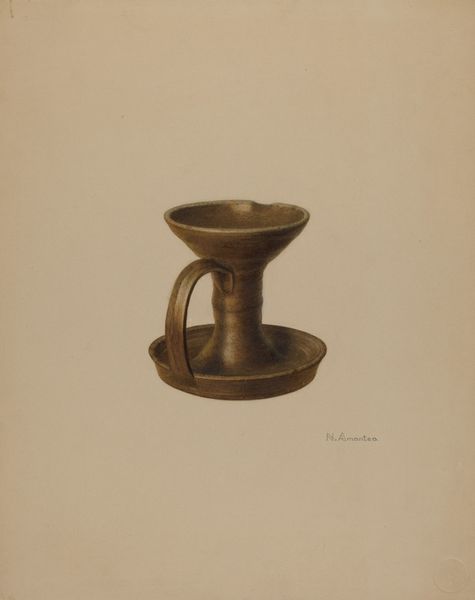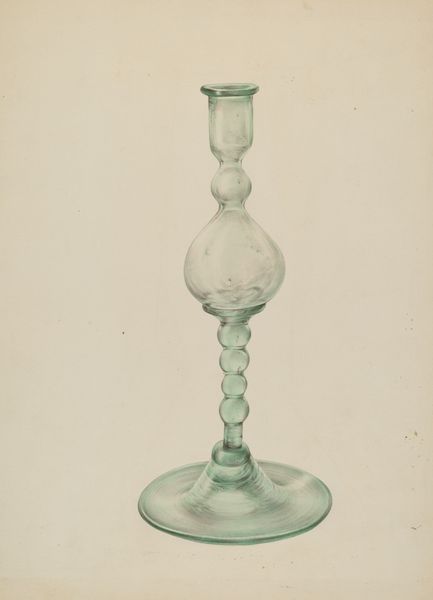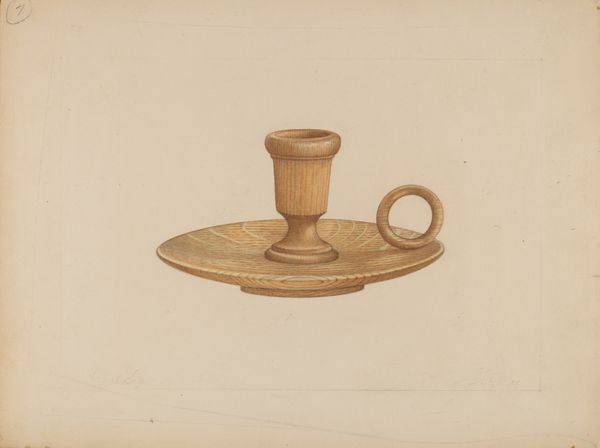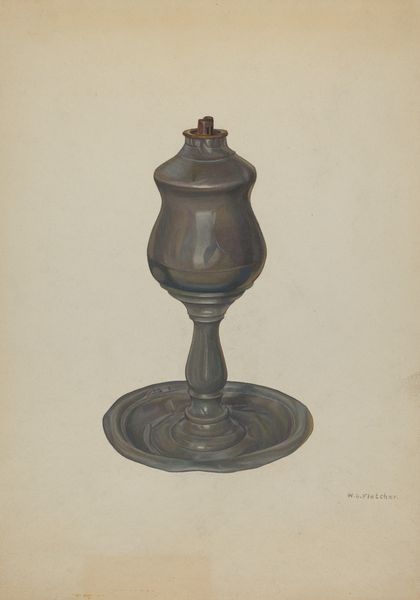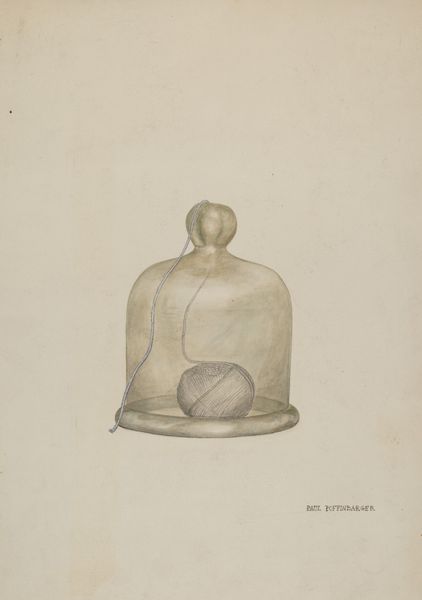
drawing, watercolor
#
drawing
#
watercolor
#
watercolor
#
realism
Dimensions: overall: 29.5 x 22.5 cm (11 5/8 x 8 7/8 in.) Original IAD Object: 3 1/2" high; 3 7/8" in diameter
Copyright: National Gallery of Art: CC0 1.0
Editor: This is Roberta Spicer's "Butter Mold," a watercolor from around 1939. It has a sort of quiet, almost melancholic feeling. What historical and social stories do you think this everyday object can tell us? Curator: Excellent question! I think it's less about melancholia and more about seeing the political through the domestic. How does Spicer's focus on a seemingly simple kitchen tool speak to broader issues of labor, gender, and class in 1930s America? Editor: Could you elaborate on that a little more? I hadn't considered it in such a complex light! Curator: Absolutely! Think about the context: the Great Depression. For many women, maintaining a household, including producing food, became even more critical. It directly ties into discussions of self-sufficiency and the romanticizing—but also the devaluing—of women's work. It also intersects with art movements from the period, such as social realism, that sought to document the realities of everyday life. Editor: So, this painting is more than just an image of a butter mold, it's a quiet commentary on social and economic realities? Curator: Precisely! How can we challenge the perception of craft or folk art objects as being solely nostalgic or apolitical when women artists produced such work during a time when socio-economic inequalities were rampant? Editor: I never would have looked at a butter mold and considered the complexities of gender and economic structures in the 1930s. Thank you. I've learned so much. Curator: Indeed. Spicer's painting reminds us to be ever-vigilant to the layered histories embedded within these humble, and easily overlooked, artifacts.
Comments
No comments
Be the first to comment and join the conversation on the ultimate creative platform.
